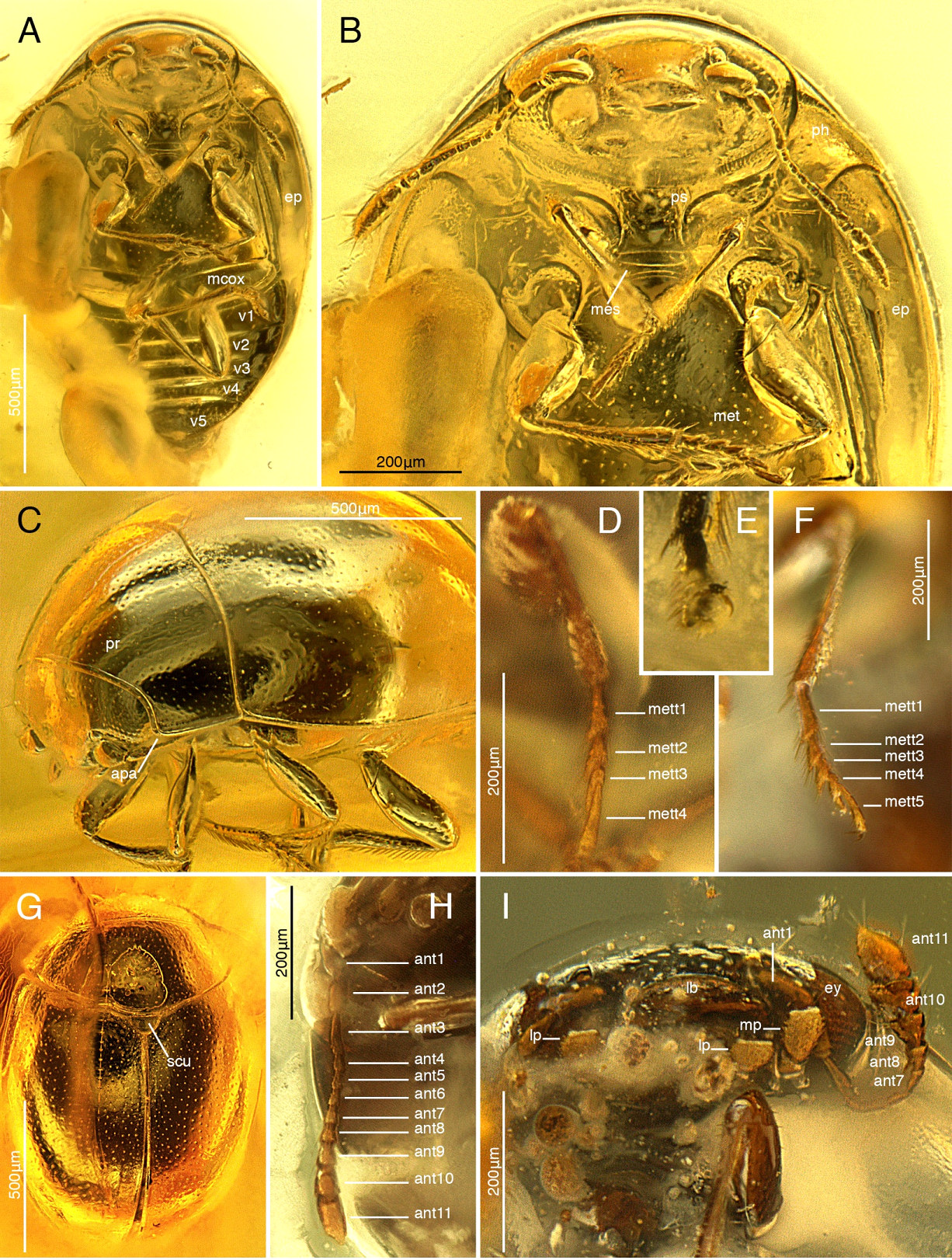Cyclaxyridae on:
[Wikipedia]
[Google]
[Amazon]
Cyclaxyridae are a family of beetles in the superfamily
 * ''
* ''
Cucujoidea
Cucujoidea is a superfamily of beetles. This group formerly included all of the families now included in the superfamily Coccinelloidea. They include some fungus beetles and a diversity of lineages of "bark beetles" unrelated to the "true" bark ...
. The only living genus is ''Cyclaxyra
''Cyclaxyra'' is a genus of cucujoid beetles in the family Cyclaxyridae, and the sole extant genus in the family, others being known only from fossils.Gimmel, M.L., Szawaryn K., Cai C. & Leschen R.A.B. (2019) Mesozoic sooty mould beetles as livin ...
'', with two species endemic to New Zealand. Other species have been named from fossils. They are also known as sooty mould beetles due to the association of ''Cyclaxyra'' with sooty mould
Sooty mold (also spelled sooty mould) is a collective term for different Ascomycete fungi, which includes many genera, commonly ''Cladosporium'' and ''Alternaria''. It grows on plants and their fruit, but also environmental objects, like fences, ...
. The extant species are mycophagous
Fungivory or mycophagy is the process of organisms consuming fungi. Many different organisms have been recorded to gain their energy from consuming fungi, including birds, mammals, insects, plants, amoebas, gastropods, nematodes, bacteria and othe ...
, feeding on spores, conidia
A conidium ( ; ), sometimes termed an asexual chlamydospore or chlamydoconidium (), is an asexual, non-motile spore of a fungus. The word ''conidium'' comes from the Ancient Greek word for dust, ('). They are also called mitospores due to the ...
, and hyphae
A hypha (; ) is a long, branching, filamentous structure of a fungus, oomycete, or actinobacterium. In most fungi, hyphae are the main mode of vegetative growth, and are collectively called a mycelium.
Structure
A hypha consists of one or ...
.
Genera
 * ''
* ''Cyclaxyra
''Cyclaxyra'' is a genus of cucujoid beetles in the family Cyclaxyridae, and the sole extant genus in the family, others being known only from fossils.Gimmel, M.L., Szawaryn K., Cai C. & Leschen R.A.B. (2019) Mesozoic sooty mould beetles as livin ...
'' Broun, 1893, New Zealand, recent
** ''Cyclaxyra jelineki
''Cyclaxyra jelineki'' is a species of cucujoid beetle in the family Cyclaxyridae
Cyclaxyridae are a family of beetles in the superfamily Cucujoidea. The only living genus is '' Cyclaxyra'', with two species endemic to New Zealand. Other specie ...
'' Gimmel, 2009
** ''Cyclaxyra politula
''Cyclaxyra politula'' is a species of cucujoid beetle in the family Cyclaxyridae
Cyclaxyridae are a family of beetles in the superfamily Cucujoidea. The only living genus is '' Cyclaxyra'', with two species endemic to New Zealand. Other specie ...
'' (Broun, 1881)
* †'' Electroxyra'' Gimmel, Szawaryn, Cai and Leschen, 2019
** ''Electroxyra cretacea'' (Wu in Wu, Li and Ding, 2018) Burmese amber
Burmese amber, also known as Burmite or Kachin amber, is amber from the Hukawng Valley in northern Myanmar. The amber is dated to around 100 million years ago, during the latest Albian to earliest Cenomanian ages of the mid-Cretaceous period. The ...
, Myanmar, Late Cretaceous (Cenomanian
The Cenomanian is, in the ICS' geological timescale, the oldest or earliest age of the Late Cretaceous Epoch or the lowest stage of the Upper Cretaceous Series. An age is a unit of geochronology; it is a unit of time; the stage is a unit in the s ...
)
* †'' Pacyclaxyra'' Tihelka, Huang and Cai, 2021
** ''Pacyclaxyra azari'' Tihelka, Huang and Cai, 2021 Burmese amber, Myanmar, Cenomanian
* †'' Neolitochropus'' Lyubarsky and Perkovsky, 2016
** ''Neolitochropus hoffeinsorum'' Lyubarsky & Perkovsky, 2016 Bitterfeld amber
The Baltic region is home to the largest known deposit of amber, called Baltic amber or succinite. It was produced sometime during the Eocene epoch, but exactly when is controversial. It has been estimated that these forests created more than 1 ...
, Rovno amber
Rivne amber, occasionally called Ukrainian amber, is amber found in the Rivne Oblast and surrounding regions of Ukraine and Belarus. The amber is dated between Late Eocene and Early Miocene, and suggested to be contemporaneous to Baltic amber. ...
, Baltic amber
The Baltic region is home to the largest known deposit of amber, called Baltic amber or succinite. It was produced sometime during the Eocene epoch, but exactly when is controversial. It has been estimated that these forests created more than 1 ...
, Europe, Eocene
The Eocene ( ) Epoch is a geological epoch (geology), epoch that lasted from about 56 to 33.9 million years ago (mya). It is the second epoch of the Paleogene Period (geology), Period in the modern Cenozoic Era (geology), Era. The name ''Eocene' ...
References
{{Taxonbar, from=Q899747 Cucujoidea families